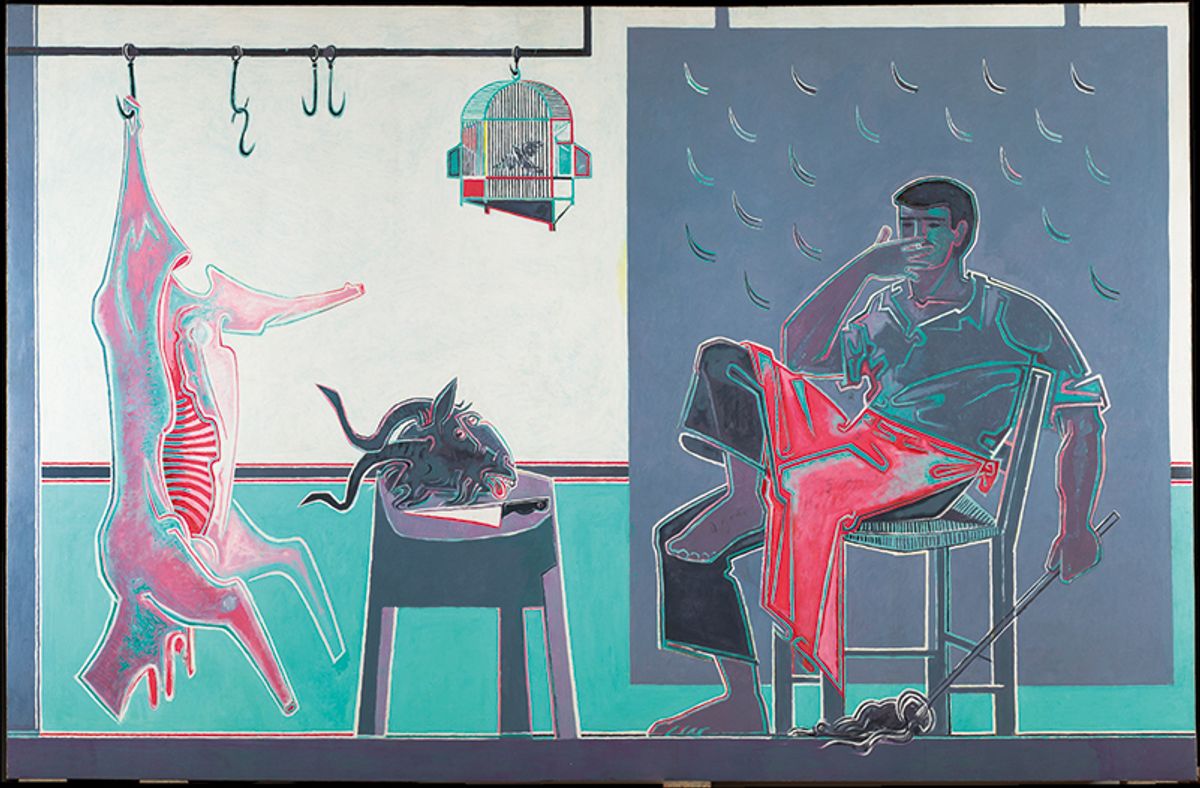It can be bit of a mystery as to whether a given artist achieves stellar renown—or not. In the 1940s, alongside his close friend Lucian Freud, the British painter John Craxton (1922-2009) looked likely to achieve big things. Blessed with personal charm, precocious talent and a wide range of powerful contacts (notably Peter Watson, a collector and editor of the influential magazine Horizon), Craxton had a bright future ahead, arguably more so than Freud, with whom he shared a studio in the early 1940s.
According to Ian Collins, the author of a 2021 biography and co-curator of a substantial new survey at the Pallant House Gallery in Chichester, Craxton was hailed as the “poster boy” for the short-lived neo-Romantic movement, the British landscape painting revival in the 1940s influenced by a renewed appreciation for William Blake and Samuel Palmer. Craxton found early acclaim for illustrations, book covers and paintings and gouaches such as Alderholt Mill (1941), Tree Root in a Welsh Estuary (1943) and Pastoral for PW (1948).
So, why did Craxton, a productive and often dazzling artist, spend the ensuing decades largely, in Collins’s phrase, “under the radar”? Principally, his move to Greece in 1946 meant that Craxton “was the artist who had gone off in every sense,” Collins says. “He had gone abroad and hadn’t done what he was expected to do. He hated any kind of label, and he had the life he wanted but without the recognition.”
Having encountered ancient Greek artefacts at the now-closed Pitt-Rivers Museum in Farnham, Dorset, Craxton became besotted with the country and particularly with what Collins calls the “survival of myth”: the sense of connection that ordinary Greeks had with the Greece of antiquity. Craxton’s work thereafter largely revolved around a pastoral vision of Greece, producing studies of fisherfolk, shepherds and sailors.
Craxton’s story is, of course, a little more complex. He was forced to leave Greece during the junta period in the late 1960s and early 1970s, and in any case made regular visits to the UK for exhibitions and commissions such as set designs for Frederick Ashton’s 1951 Covent Garden production of Daphnis et Chloë. Another of Craxton’s works-in-exile, a mammoth tapestry normally to be found in the University of Stirling’s Macrobert Arts Centre, will be installed in Chichester cathedral in December—the first time that it has been outside Scotland. But, the curator adds, Craxton’s lack of recognition should not be seen as a failure: “His achievement was himself; he was one of those lucky people who knew from a very early age what they wanted to be.”
• John Craxton: A Modern Odyssey, Pallant House Gallery, Chichester, 28 October-21 April 2024


